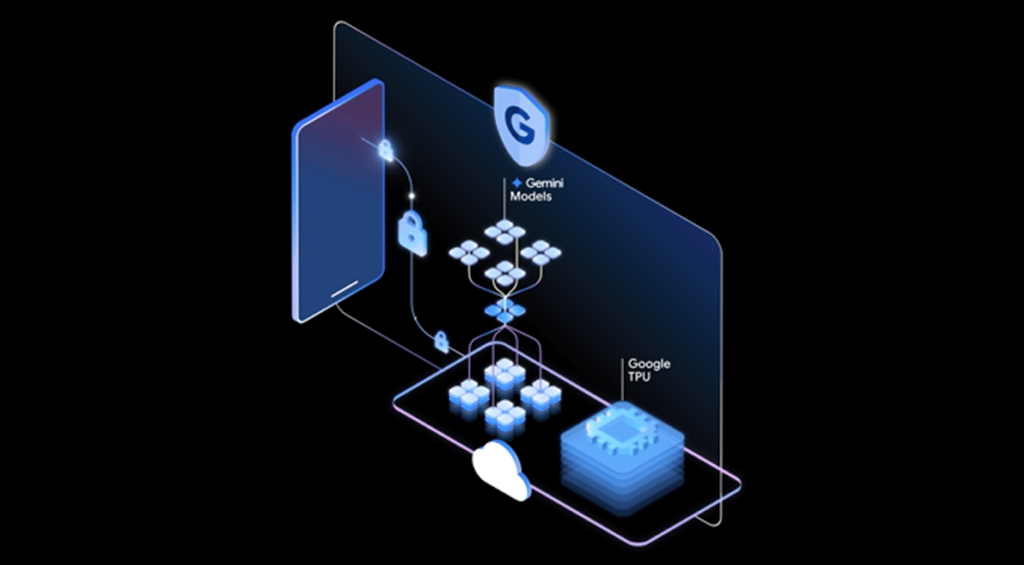Cloud Infrastructure as a Service (IaaS) is arguably the future of hosting. Traditional hosting companies, carriers and a bevy of service-provider newcomers all have a stake in this new market space.
Meanwhile, enterprises that are stuck managing traditional on-premise infrastructures are losing ground competitively against nimble, cloud-based startups. As data centers grow, so do operational responsibilities for IT staffs, and in these days of tight IT budgets and widespread layoffs, the data center status quo is not sustainable for any but the largest organizations.
The IaaS sector is still an immature and evolving market. Yet, according to a recent survey by F5 Networks, over 65 percent of enterprises are already adopting IaaS and PaaS services.
Since the IaaS model is new and somewhat confusing, I should pause here to define the term. IaaS is a computing model where organizations rent computing resources, including servers, storage and networking, from service providers on a pay-as-you-go basis. In the early phases of IaaS, many organizations still manage their own (rented) infrastructure and use the IaaS platform as the foundation for their applications.
Key features of IaaS include the ability to scale up or down as needed, pay-as-you-go billing, the inclusion of virtualized hardware resources and the automation of burdensome IT tasks, such as patching.
A key advantage of IaaS is that as soon as the service provider patches, updates or innovates, those changes are often immediately and transparently available to customers.
As you investigate various IaaS solutions, here are five questions you should answer before deciding on any specific provider:
1. Is the IaaS model right for you, or are you better off with PaaS, SaaS or other cloud models?
The simplest way to separate out IaaS from PaaS and SaaS is to envision the cloud service provider stack. IaaS starts with the data center plumbing (HVAC, electricity, etc.), moves up to network plumbing (routers, switches, load balancers, etc.) and on up to server and storage hardware, which then typically includes a virtualization layer on top.
That’s where IaaS leaves off. PaaS takes up the next two layers of the stack, operating systems and infrastructure software (MySQL, Azure, Java, Google Apps, etc.), while SaaS delivers hosted applications, such as those from Salesforce.com. Using IaaS and PaaS services, organizations can deliver their own apps in a cloud-based, on-demand fashion.
Of course, the cloud provider stack looks a heck of a lot like the old OSI stack, just wrapped in different nomenclature. That’s true, but there are three key differences: 1) virtualization is the cornerstone of the xaaS delivery model; 2) services are delivered elastically, meaning customers can scale up or down at will and without having to renegotiate contracts, and 3) services are paid for via the pay-as-you-go utility model, rather than the traditional shrink-wrap, per-CPU one.
As with any new technology, the xaaS divisions aren’t set in stone. There will be plenty of spillover from one model to the next and not every service provider will define things consistently.
The question to ask, then, is how do you intend to develop and deploy applications? If your developers need a lot of autonomy to do things their way, IaaS is probably the model for you.
Impact Dialing, as with so many startups, was founded out of frustration. Founder Michael Kaiser-Nyman had previously worked on political campaigns, and making numerous calls to raise funds, persuade people on key issues and get out the vote was a major headache.
Auto-dialing programs were cumbersome and expensive, and trying to train volunteers to use them was nearly impossible. “Legacy auto-dialers are built on legacy computing platforms, all on their own servers in their own data centers. Usability is low and scalability is terrible,” Kaiser-Nyman said.
When CEO and founder Kaiser-Nyman started the company, he looked around for a platform he could leverage to build a cloud-based auto-dialer that would be simple to use, easy to scale and affordable.
He looked at major IaaS and PaaS providers, including Amazon’s Elastic Compute Cloud (Amazon EC2), Google AppsEngine, Microsoft Azure and Rackspace. He also looked at two PaaS providers that leverage Amazon EC2, Heroku and Engine Yard.
Kaiser-Nyman decided that the IaaS model was best for his startup. “The PaaS services are great. They solve so many problems for you, and you don’t have to configure everything yourself,” he said. “On the other hand, they lock you into certain configurations and don’t offer the flexibility of pure-play IaaS.”
Building an app based on Ruby on Rails required a lot of deep-in-the-trenches development work that meant that most PaaS services simply wouldn’t work. “Our app has special requirements that most platforms can’t meet. Many organizations will want to outsource many of the operations and development jobs, but we simply had to keep those things under our control,” Kaiser-Nyman added.
Another consideration for Impact Dialing was the fact that they intended to use the cloud-based voice and SMS services from Twilio. Since Twilio was built and hosted on Amazon EC2, by choosing Amazon themselves, Impact Dialing was able to colocate with them to minimize latency issues.
2. Will implementing the IaaS require additional IT resources?
Shifting from a traditional siloed data center to a dynamic IaaS can be a monumental adjustment for enterprises that have already allocated resources and personnel to managing everything in-house. Depending on the IaaS solution, IT managers may still be responsible for patches, updates and maintenance, in addition to migrating the traditional infrastructure to the IaaS provider.
However, some IaaS providers alleviate the burden on IT by automating operational tasks, streamlining processing and provisioning and managing services traditionally handled by internal IT. Xcitek Solutions Plus (XSP) helps the financial services industry mitigate the operational risks and costs associated with corporate actions processing.
XSP was at an impasse trying to manage their entire infrastructure in-house. IT was not only responsible for managing its internal infrastructure, but also supporting the ongoing development and investment in XSP’s enterprise software.
“We came to the realization that we needed to focus on building our core software offering and providing great customer experiences, not managing a complex enterprise infrastructure environment,” said XSP’s CTO, Dan Retzer.
After surveying several IaaS vendors, which XSP preferred not to mention by name, XSP selected the Tier 3’s Enterprise Cloud Platform for its availability, security and built-in disaster recovery, as well as its capabilities for performance and provisioning in the cloud.
As a result, XSP has seen considerable benefits from no longer needing to maintain and support its own IT infrastructure. Instead, IT staff can focus on providing service to clients from a single point of entry using the Tier 3 Management Control Portal, rather than physically managing their servers.
For startups with limited resources, ease of IT operations is a motivating factor in choosing an IaaS vendor. For Wilton Re, a company that provides risk and capital management solutions for the life insurance industry, robust IT operations and management was critical to the launch and growth of the company. Instead of building an IT department from the ground up, Wilton Re contracted Logicalis to not only manage their total infrastructure, but also to provide long-term IT operations for the company.
Andy Wood, CTO at Wilton Re, emphasized how outsourcing their IT department has impacted their ability to focus on core business. “Our key internal skills are business analysis, process analysis, information analysis, project management, and relationship management. That is what we do best. Logicalis is well positioned to provide the IT operation layer. That’s what Logicalis does best.” In this age of specialization and outsourcing, IaaS services help businesses of all stripes stay focused on their core missions.
3. How easy is it to scale up (or down) your services?
Scalability is supposed to be an inherent feature of IaaS. As with so many “supposed to’s,” things don’t always work as advertised. With many IaaS and other cloud services, scalability means you can scale up to certain threshold or down to a cut-off level. You’re still operating within basic parameters, though, albeit parameters that are far more flexible than with traditional one-app-per-server computing.
After Lehman Brothers Holdings Inc. (LMHI) filed for Chapter 11 bankruptcy in March 2008, the financial giant sold its off many of its business divisions, along with its entire technology division (datacenters, servers, people running the systems, etc.), which meant that Lehman Brothers was left without the technology assets necessary to support the wind-down of the company.
As part of its Chapter 11 reorganization plan filed in the spring of 2010, Lehman formed an asset manager business called LAMCO that would specialize in management of Lehman’s commercial real estate, mortgages, principal investments, private equity, corporate debt and derivatives assets.
Tasked with building an entirely new technology infrastructure for Lehman, LAMCO faced a unique challenge. Most businesses’ infrastructures are built for growth and designed with excess capacity. This infrastructure, however, needed to assume peak capacity on day one and then be positioned to wind-down over time. The company began to look into cloud computing, since it offered “pay-by-the-drink” pricing, scalability and the ability to manage the entire infrastructure as a single entity.
“Given our unique situation, we didn’t want to spend upfront capital on an in-house solution. We were faced with two issues: first, the technology would be a depreciating asset; and second, we would have been purchasing at peak capacity on day one and then half way through the project, we would only be running with 50 percent excess capacity,” said James Johnson, Senior VP, LAMCO.
The LAMCO team submitted RFPs to seven large cloud hosting companies, which it declined to name. LAMCO selected Bluelock’s VMware-based Virtual Cloud Enterprise service due in large part to its flexible scaling capabilities.
LAMCO began moving their IT assets onto Bluelock’s Virtual Cloud Enterprise in January 2009, with the goal of completing the migration by the end of the year. Prioritizing flexibility and scalability in their cloud provider soon paid off.
“Originally we assessed that 13 TB of data would be migrated, but in the end, it was well in excess of 65 TB,” said Johnson. “While our core computing capacity estimate was right in some areas, it was off in aggregate, and we found that we needed more capacity in other areas – something we were able to accomplish with Bluelock’s cloud. Their cloud’s flexibility enabled us to add more memory into given areas and disks into given business units, helping keep us on target despite all of the uncertainties and the lack of transparencies we had with our original capacity requirements.”
4. Does the IaaS provide adequate support?
Being able to quickly and accurately diagnose and resolve issues in any part of the infrastructure not only ensures reduced downtime, but keeps one issue from threatening your entire network. Being able to contact a dedicated support team keeps your infrastructure running smoothly and keeps enterprise on track.
However, some vendor’s customer support is not available around the clock, or 24/7 customer service is categorized as an additional service (at an additional cost). That was the reality that WoundVision ran up against during their first foray into the cloud.
WoundVision, which provides technologies to health care professionals that enable them to predict and track wounds to provide improved quality of care, initially deployed their software solution on Amazon’s EC2, but experienced gaps in client service. “Amazon enabled us to cheaply host our software, but offered no support besides a forum or a for-fee service,” said WoundVision’s IT Director, Andrew Hoover. “They offered no real guidance on how to find or resolve problems.”
WoundVision surveyed other solutions and decided on Bluelock based on its track record of providing scalability and client support. In a field like healthcare, Bluelock was able to provide the security that WoundVision needed to entrust their patients’ data to the cloud. When tasked with precisely and accurately locating their data, WoundVision said that Amazon’s support fell short.
Hoover said, “With Bluelock, I know exactly where the data is, and I can get direct access to all the firewall and security logs and reports. I always know what is going on and can report on that to be in compliance. That is extremely comforting, especially when it comes to our industry.”
5. What is your plan for outages?
Outages are a problem for any computing model. On-premise apps break, and the data centers of major providers like Amazon or Google can be knocked offline. In fact, to look at a different tech space, smartphones, RIM took a major hit recently when the latest BlackBerry outage lasted for three days in some parts of the world.
When I asked Kaiser-Nyman of Impact Dialing if he was concerned about outages, he admitted he was. Impact Dialing was even brought down by an Amazon outage, but that hasn’t soured Kaiser-Nyman on the platform. “Outages definitely concern me, and should concern anyone, but one thing I like about Amazon is that they tell you up front that things will break and that you should design for failure,” he said.
Designing for failure should be obvious, but many cloud providers try to sweep the outage issue under the rug. Amazon does its best to mitigate outages through its “Availability Zones,” which are comprised of data centers located in geographically distinct regions that are engineered to be insulated from failures in other Availability Zones.
“It’s not easy to guarantee high uptime in the cloud or even in your own data center,” Kaiser-Nyman said. “For a business like ours, we couldn’t deliver the uptime and have the failover capabilities that we have without a service like Amazon’s.”
As part of your failover planning, it’s probably also a good idea to have a plan for moving from one IaaS provider to another should your provider go out of business, get acquired or fail to live up to its SLAs. After all, BlackBerry used to be the only credible solution for mobile enterprise email. Now, knowledge workers can’t get off of that platform soon enough.
-
Huawei’s AI Update: Things Are Moving Faster Than We Think
FEATURE | By Rob Enderle,
December 04, 2020
-
Keeping Machine Learning Algorithms Honest in the ‘Ethics-First’ Era
ARTIFICIAL INTELLIGENCE | By Guest Author,
November 18, 2020
-
Key Trends in Chatbots and RPA
FEATURE | By Guest Author,
November 10, 2020
-
Top 10 AIOps Companies
FEATURE | By Samuel Greengard,
November 05, 2020
-
What is Text Analysis?
ARTIFICIAL INTELLIGENCE | By Guest Author,
November 02, 2020
-
How Intel’s Work With Autonomous Cars Could Redefine General Purpose AI
ARTIFICIAL INTELLIGENCE | By Rob Enderle,
October 29, 2020
-
Dell Technologies World: Weaving Together Human And Machine Interaction For AI And Robotics
ARTIFICIAL INTELLIGENCE | By Rob Enderle,
October 23, 2020
-
The Super Moderator, or How IBM Project Debater Could Save Social Media
FEATURE | By Rob Enderle,
October 16, 2020
-
Top 10 Chatbot Platforms
FEATURE | By Cynthia Harvey,
October 07, 2020
-
Finding a Career Path in AI
ARTIFICIAL INTELLIGENCE | By Guest Author,
October 05, 2020
-
CIOs Discuss the Promise of AI and Data Science
FEATURE | By Guest Author,
September 25, 2020
-
Microsoft Is Building An AI Product That Could Predict The Future
FEATURE | By Rob Enderle,
September 25, 2020
-
Top 10 Machine Learning Companies 2020
FEATURE | By Cynthia Harvey,
September 22, 2020
-
NVIDIA and ARM: Massively Changing The AI Landscape
ARTIFICIAL INTELLIGENCE | By Rob Enderle,
September 18, 2020
-
Continuous Intelligence: Expert Discussion [Video and Podcast]
ARTIFICIAL INTELLIGENCE | By James Maguire,
September 14, 2020
-
Artificial Intelligence: Governance and Ethics [Video]
ARTIFICIAL INTELLIGENCE | By James Maguire,
September 13, 2020
-
IBM Watson At The US Open: Showcasing The Power Of A Mature Enterprise-Class AI
FEATURE | By Rob Enderle,
September 11, 2020
-
Artificial Intelligence: Perception vs. Reality
FEATURE | By James Maguire,
September 09, 2020
-
Anticipating The Coming Wave Of AI Enhanced PCs
FEATURE | By Rob Enderle,
September 05, 2020
-
The Critical Nature Of IBM’s NLP (Natural Language Processing) Effort
ARTIFICIAL INTELLIGENCE | By Rob Enderle,
August 14, 2020
SEE ALL
CLOUD ARTICLES









